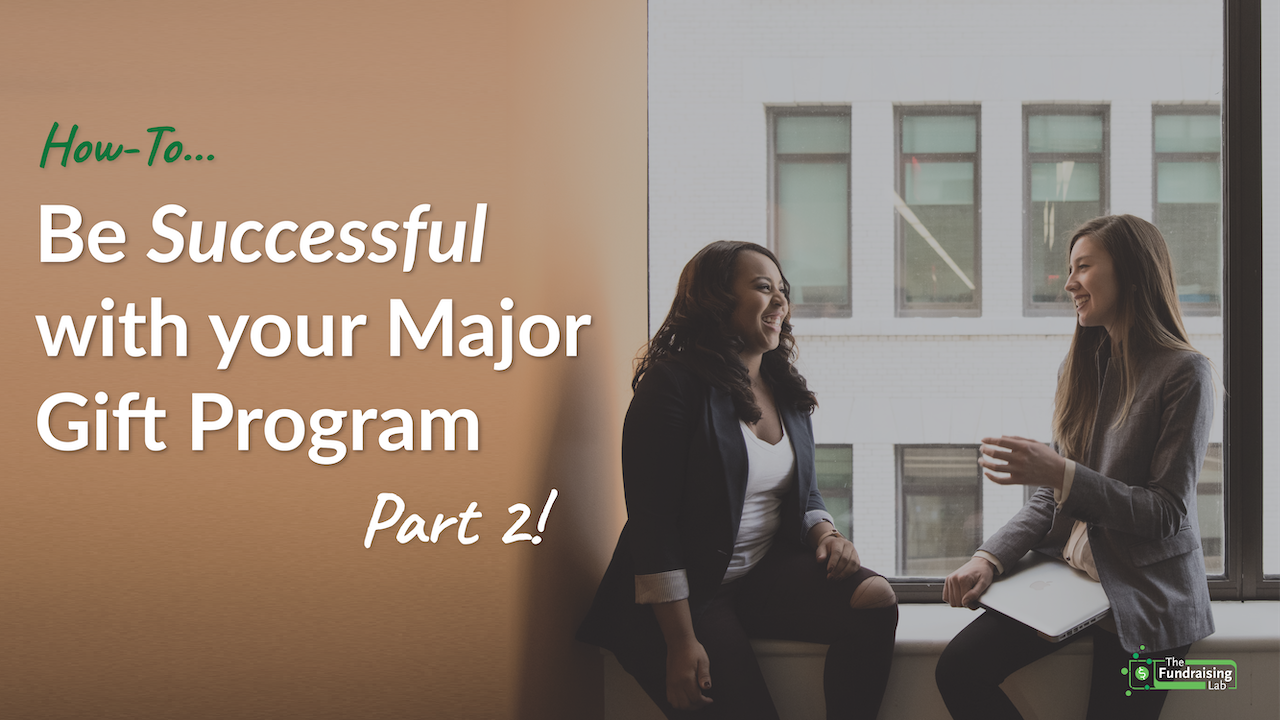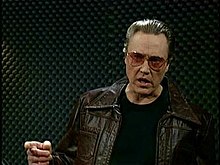How to Be Successful with your Major Gift Program, Part 2

Being successful at major gifts is an art unto itself. That’s why we wanted to share more with you in this two-part series.
So last week (if you need a refresher, you can check out the blog here), we talked about the importance of (1) a plan and (2) knowing what you’re asking your donors for…
But that’s not all…
Here’s the rest of the secret sauce.
In addition to planning and knowing what you need funding for, there are two more elements to put into place so you can secure gifts that will make a difference to your organization…especially if you’re in a small shop.
What are they…first, some cowbell…

*If you have been hiding under a rock, you need to watch Christopher Larkin and Will Farrell’s skit on Saturday Night Live, ‘More Cowbell’!
- Listen to your Donors
- Run a Cultivation Event
So what do you need to know exactly? Let’s break it down.
Listen to your Donors
Remember the importance of the database we shared in our last blog? Well go back to it and look at all of your donors who are giving at the major gift level for your organization. Do you have 5 donors who give more than $1,000? Or $500?
Then guess what…your major giving program starts with them.
And what do you do with them? You…
- reach out to chat.
- ask why they are interested in your cause and what inspired them to give.
- develop a relationship with them.
- ask them if they’d be willing to provide you with some advice, from time to time, based on their experience as one of your org’s bigger donors.
You’re not reaching out to ask them for another donation…
You simply want to learn what inspired them to give to see if it will help to inform your future fundraising program.
And then listen to what they have to say.
And try to implement it, within reason. You may learn a lot from chatting with these donors.
So, if you have a handful of donors and you meet with them and chat about what they think, there is one question you want to make sure to ask during your conversation:
Is there anyone they know who they think would
like to know more about your organization?
And then ask them if they’d feel comfortable making an introduction so you can provide them more information. And perhaps ask if they’d like to be part of the conversation.
The goal is not to solicit this person at that first meeting. It’s simply to introduce them to your organization and see if they’d like to continue to be involved.
That might be your major giving program for your first year.
That’s cool. It means you’re being intentional about talking to your larger individual donors. You’ll learn some interesting things from them that you may try to incorporate into your fundraising and stewardship program.
Woo hoo! You’re on your way.
Now, let’s say you’ve done the above already and you have a relationship with a handful – or more – donors who are giving $1,000. That means a couple of things:
- you can tell from your database how many $1,000 + donors you have (That’s a good sign). They can be one-time donations or monthly donors whose monthly gifts add up to $1,000 each year (it always comes back to the database).
- you’ve done something in the past that has inspired people to give $1,000 or more. Make sure you know what that was. Was it a special event? Was it a face-to-face ask? Why have people given you $1,000 in the past?
Run a Cultivation Event
So, you have some donors but you don’t have enough resources to justify a full-time person doing major gift fundraising. Do you have staff resources to develop a well-oiled, regular cultivation event?
One of the things that COVID has done is made it acceptable to host tours using tools like Zoom. It’s so much easier to get people to say yes to a one-hour virtual commitment because they don’t have to travel anywhere. It really becomes a one-hour time commitment vs. 2 – 3 hours that included travel time in the past.
This notion of regular cultivation events is based on the following principles:
- It’s too time-consuming for a small team to reach out to individual donors, even if they are giving $1,000.
- There are folks who will appreciate being part of a community of other donors.
- While you may not be able to meet with donors individually, face-to-face solicitations are powerful, even if they are done in a group setting.
- Donors who give larger sums of money may be a potential source of both passionate allies and future major gift donors.
- You need volunteers who are able to and willing to rely on the strength of their relationships with networks of friends, family and colleagues to invite and get people to these cultivation events.
The basic structure of running a well-oiled, cultivation event is this:
- You host a somewhat regular event virtually. You must have someone who can invest the time to manage this somewhat regular event. You need to choreograph it so that the presentation/event is easy to do.
- You need volunteers who can bring people to the event. LOTS OF PEOPLE. THIS IS THE CRUX OF THE PROGRAM. If you don’t have this figured out, it will just fizzle out. You need volunteers (board, committee members, other staff) who understand their role.
- You follow up with folks after the event and have a conversation with them to get their input.
Your volunteers’ job is to get people to come.
Your job is to inspire them to want to get involved.
That includes the event itself (the dog and pony show, as I like to call it) and the follow-up conversation. You ask strategic questions and ultimately, you ask their permission to stay in touch with them. If they give you permission, you get to continue to inform them about your work. And you add them to your stewardship program so that they get regular correspondence from you.
There are variations and permutations for how to use this kind of model for solicitation. Some organizations I work with solicit donations at this event. Some wait for more follow up and have a face-to-face solicitation later.
But don’t go to all of the effort with this kind of model if you don’t have a plan for how to do the solicitation.
At the end of the day…
- There are a lot of moving parts that you need to have in place.
- You need to know what you’re asking money for.
- You need to have a database with good info about your donors.
- You need staff resources to support this program – probably at least one day per week, depending on how frequently you plan on holding cultivation events and how you are going to solicit folks.
- You need volunteers who will commit to filing bums in seats, as we say. THIS IS CRITICAL!!!
- You need a good stewardship program to incorporate folks who have attended the events and given you permission to do so.
Like we said before, a major gifts program takes multiple steps to get right. Because fundraising is about building successful programs that bring in more donations. And we’re all about helping you bring in more donations.
Yippee kay yay,
Cathy Mann and the team at Fundraising Lab
P.S. Want to see our other free blogs that are chock-full of great information? Check out our page here.

